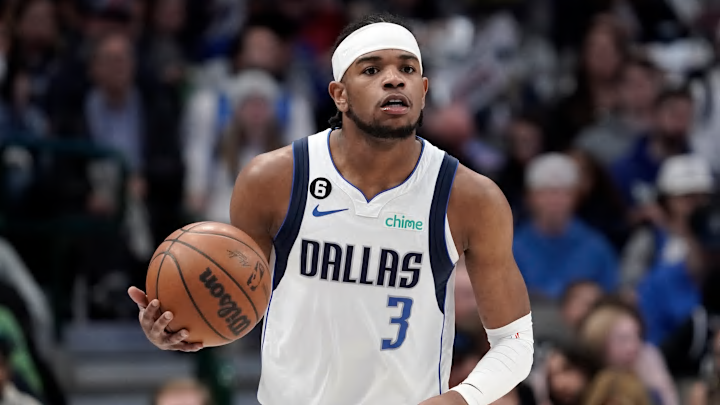The Dallas Mavericks made a bold decision when they decided to trade into the 2022 NBA Draft. The Mavs had their eyes set on Jaden Hardy, especially as he continued his draft-day slide, and pulled the trigger to select Hardy with the 37th overall selection.
In hindsight, this trade was brilliant. Hardy recorded the second most points of all the second-rounders and proved to be a significant contributor for the Mavericks going forward.
The Mavs guard has been a known commodity for a while, which may have actually led to his downfall during the pre-draft process, as scouts were able to nitpick his game for several years. Hardy averaged 30.4 points per game as a junior in high school and ultimately decided to cut his senior year short as he was already a consensus top-5 recruit without much left to prove.
3 things Mavericks guard Jaden Hardy must do to reach his ceiling
Hardy decided to go straight to the professional level, joining the G-League Ignite in 2021. His initial season in the G-League didn't go as planned. Hardy continued to display his scoring prowess, averaging 17.7 points per game, but he only shot 35.1 percent from the floor and 26.9 percent from distance.
Thus, Hardy went from a top-ranked prospect to a second-rounder in a season. But, the Mavs wisely decided to select Hardy and it paid dividends.
Hardy played sparingly during the beginning of the season, as he also split time with the Mavs G-League affiliate, Texas Legends. But once the calendar flipped to 2023, the Mavs began giving Hardy more floor time.
Hardy averaged 7.2 points in January, then 8.7 points in February, before exploding for 15.6 points per game in March. Hardy finished the season with averages of 8.8 points, 1.9 rebounds, and 1.4 assists per game.
And unlike his struggles in the G-League, Hardy shot the ball with great efficiency. He shot 43.8 percent from the field and 40.4 percent from beyond the arc.
After the season concluded, he suited up for the Mavs Summer League team looking to expand upon his successful freshman season. But, things didn't go according to plan for Hardy. His shooting splits were eerily similar to his G-League Ignite stats.
Once again, Hardy looked like a high-volume scorer. He averaged 23.0 points per game, but shot 35.2 percent from the floor and 24.1 percent from three.
Was his rookie season an aberration, or will he continue to shoot the ball with excellent efficiency in a larger role? Also, will Hardy display any sense of playmaking or become a reliable defender going forward?
To reach his ceiling, Hardy must be able to find consistency and provide more than just scoring and high-volume shooting.
3. Continued efficiency
Jaden Hardy hasn't seen a shot he doesn't like. And, although this is sometimes a good mindset to have, it can also hurt an offense. While playing for the G League Ignite, Hardy only made six of the seventeen shots he attempted on a given night.
To make matters worse, Hardy averaged 6.5 three-point attempts per game and only averaged 1.8 three-point makes per game. Sure, averaging 17.7 points looks good, but his efficiency left much to be desired.
Every single scouting report pinpointed Hardy's lack of consistency as a weakness. Additionally, scouting reports noted his lack of creation and having a plan while driving, thus potentially leading to decreased efficiency metrics.
However, things changed for Hardy after hitting the hardwood in the big leagues. The Mavs guard shot 43.8 percent from the field and 40.4 percent from distance.
Amongst all shooting guards, Hardy's field goal percentage ended up right below the average mark of 45.0 percent. But, Hardy shot the ball better from behind the arc than the average shooting guard. In comparison, an NBA shooting guard shoots on average, 37.0 percent.
The former high school phenom shot the ball extremely well considering how inefficient he was as a G-Leaguer. After the season, it was expected Hardy would parlay his excellent first season into a fantastic Summer League, but Hardy disappointed.
He shot below average from the floor and from three. Among the eighteen Summer League participants who attempted more than fifteen shots per game, Hardy ranked thirteenth in shooting percentage.
If the Mavericks coaching staff plans to give Hardy extended action, he must display similar or improved efficiency. His consistency has been lacking throughout his professional tenure, but luckily for Hardy and Dallas, the Mavs roster has two premier shot creators.
Hardy won't be thrust into a creating role with Dallas. He will be allowed to continue honing his playmaking skills and work as a spot-up shooter and secondary playmaker alongside Luka Doncic and Kyrie Irving.
